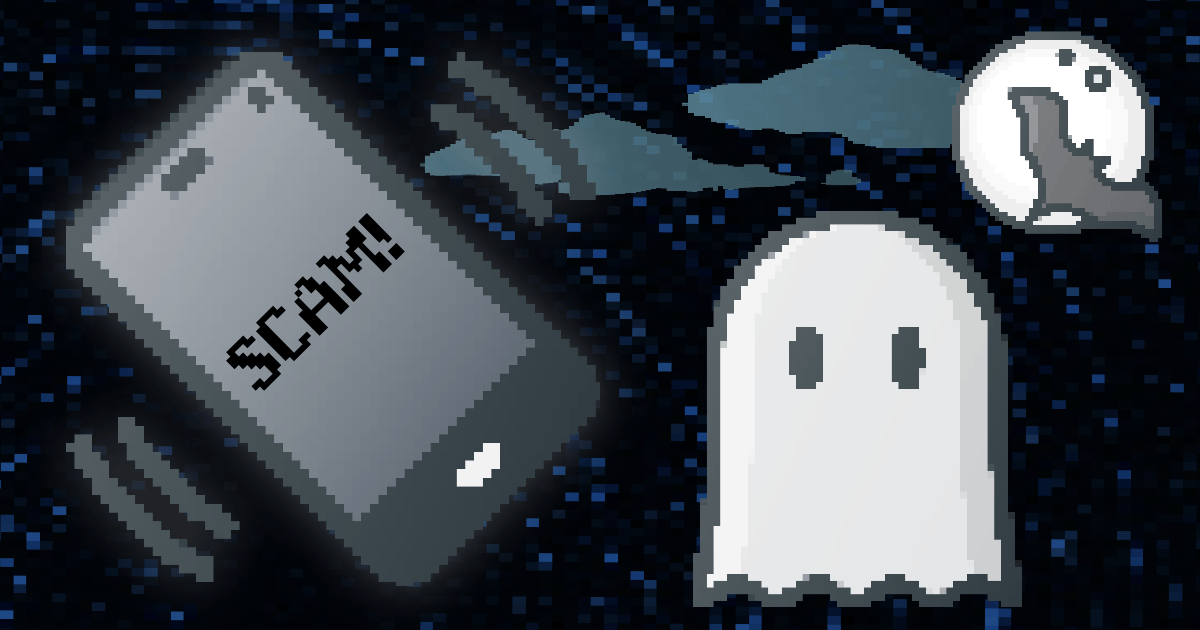My mom sent me an article this morning — worried, spooked, and convinced something evil was lurking in her phone. The headline? “FBI Warning—All Smartphone Users Must Delete These Messages”.
Let’s be honest: that reads like the setup to a cyber-horror flick. “You must delete these messages... or else.” Cue thunderclap.
Then comes the jump scare: a “raft of reports” from the New York Post, Unilad, and Yahoo. Not exactly cybersecurity’s Ghostbusters.
And just when you think you’re safe, the article hits you with this:
“Right now, your cell phone is vulnerable to an ongoing attack…” (source)
It’s the same old monster under the bed: spam texts. You know. the “your bill is overdue” goblins. The “click here for a free iPhone” poltergeists. They’ve been haunting inboxes for years.
No need to burn sage or throw your phone in the nearest cauldron. Just don’t click.
The FUD that goes bump in the feed
What we’re seeing here is classic FUD — Fear, Uncertainty, and Doubt (Wikipedia definition). It’s digital folklore in modern clothing: the cursed link, the haunted text, the FBI-shaped shadow at the end of your notifications list.
FUD thrives on goosebumps. It makes headlines that hiss “Beware!” and feeds on the clicks of the anxious and over-caffeinated.
The problem? When every tech story sounds like a cyber ghost story, people stop believing any of them — even the real warnings.
How to exorcise a FUD article
Watch for spooky verbs.
“Attack,” “urgent,” “terrifying,” “massive breach.” If it sounds like a thriller tagline, it’s probably FUD in a costume.Follow the chain of ghosts.
If an article quotes tabloids quoting blogs quoting Reddit… that’s a haunting, not an actual source.Ask: what’s the real monster here?
If the “attack” turns out to be “don’t click weird links,” congratulations — you’ve already banished that demon.Don’t let it drain your energy.
Real cybersecurity isn’t fueled by fear, it’s powered by habits. (And maybe excellent cups of tea.)
Real security, no jump scares
As we covered in They Clicked a File, cybersecurity doesn’t need to be spooky. True protection isn’t dramatic. It’s boring in the best way:
Update your software.
Use strong, unique passwords.
Ignore sketchy links.
And if “the FBI” texts you demanding payment, assume it’s a trick, not a treat.
You don’t need garlic, a firewall blessed by moonlight, or a haunted VPN.
Just good sense, and maybe a piece of Halloween candy to celebrate your calm.
Join us for tea!
CybersecuriTea is a free, plain-English guide to digital safety, designed for families, friends, and the folks you love. Subscribe today and get weekly tips to help keep your digital life secure.
Or, if you’d like to support our work and keep the kettle warm for everyone:
Issue # 21
This content may contain affiliate links. If you choose to sign up or make a purchase through them, we may earn a small commission, at no additional cost to you. Thank you for supporting CybersecuriTea.




